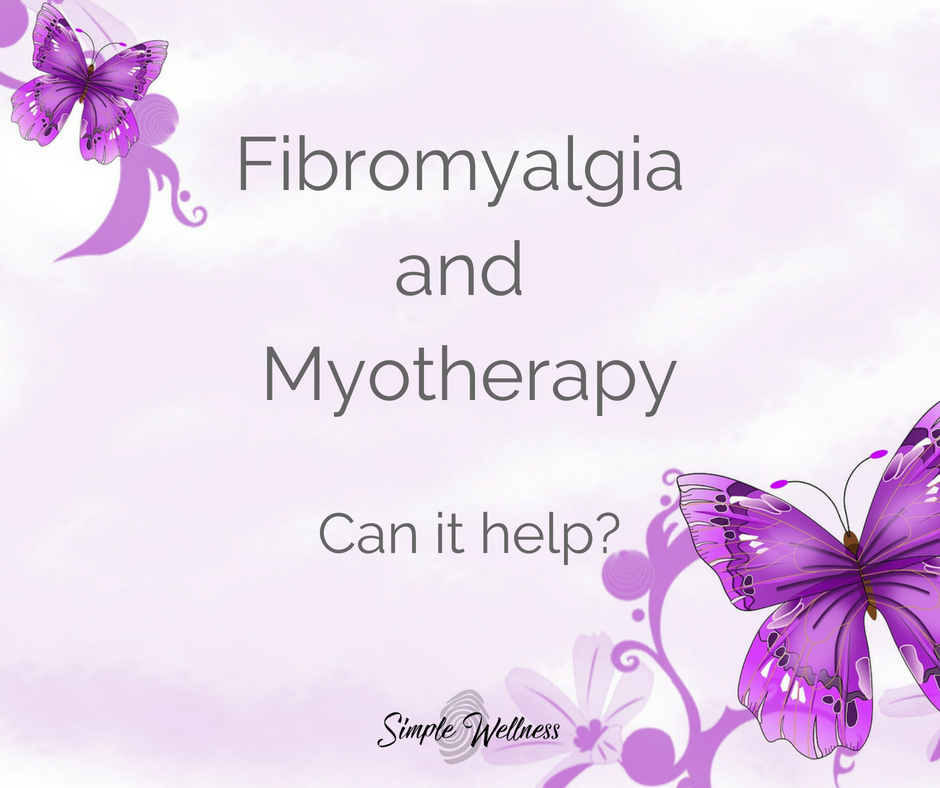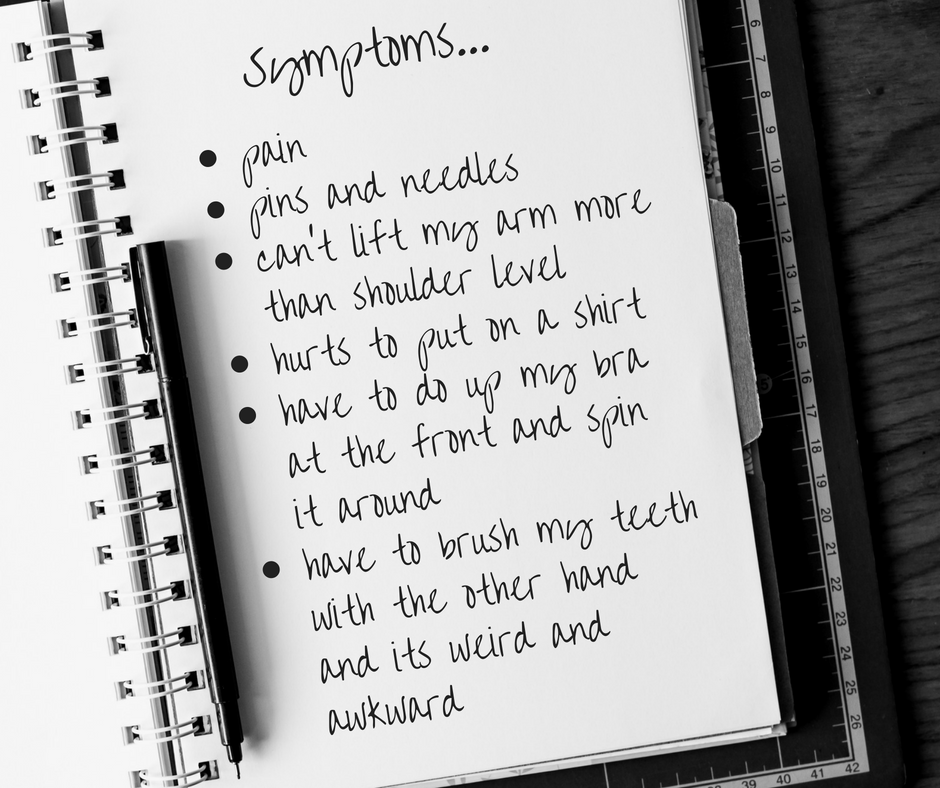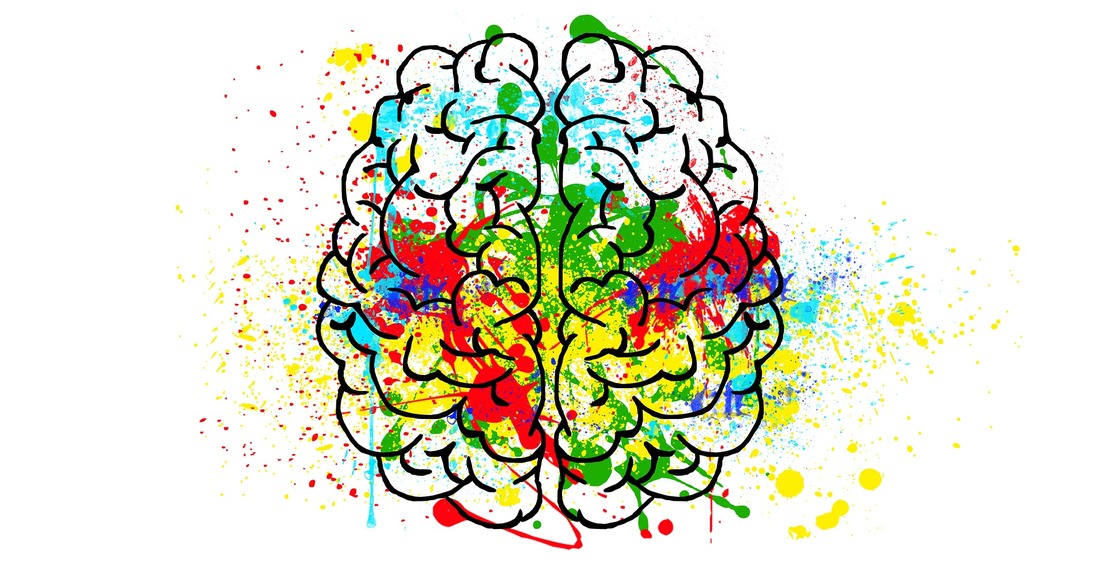|
One condition that I see a lot in my clinic is fibromyalgia. People of all ages and all walks of life can have fibromyalgia, and it is still a misunderstood condition. So today, I want to share a myotherapist’s perspective of fibromyalgia. What is Fibromyalgia?
This diagnosis is a condition that can affect multiple systems of the body. Symptoms can include widespread muscle and joint pain, fatigue, digestive issues, brain fog and weakness, among many, many other associated symptoms. People with fibromyalgia may have other health concerns, including musculoskeletal issues. In my experience, fibromyalgia can come hand in hand with conditions like bursitis, disc injuries, osteoarthritis, rheumatoid arthritis, and plantar fasciitis, and many more. Pain is a major symptom of fibromyalgia, but it can vary from person to person and day to day. Typical fibromyalgia pains can include both muscle aches and nerve pain – it can feel like a deep ache or sharp, shooting, burning, throbbing or like pins and needles. Some days the pain can cover the whole body, others it may be one area. Today it may be back pain, tomorrow it’s hands and feet. Fibromyalgia can be unpredictable at the best of times! Fibromyalgia, Pain Threshold & Pain Tolerance One thing that fibromyalgia clients should keep in mind is the difference between pain threshold and pain tolerance. Pain threshold is the amount of stimulus needed before the pain signal begins. Someone with fibromyalgia will usually have a low pain threshold - that means they feel pain often with very little "cause". They may wake up with aching, tight muscles without having over used those areas or done anything out of their ordinary routine to aggravate the area. People who experience allodynia can experience pain from normally non-painful things like the sensation of clothing on skin or the pressure of sitting in a chair. On the other hand, pain tolerance is how much pain a person will withstand before seeking help. Many fibromyalgia clients build up a high pain tolerance, putting up with pain levels that would send the average person to the emergency room! So if a practitioner mentions you have a low pain threshold, it simply means your nervous system is on high alert. It responds quickly to incoming messages about potential danger - even if rationally you know there is little or no actual danger. Its a neurological response, not a psychological response. For more about pain responses and the role of the overactive nervous system, see my previous article. How can myotherapy help with fibromyalgia? Many people with fibromyalgia are terrified of getting physical treatments, as they’ve often had painful massages and treatments in the past. Unfortunately many of my fibromyalgia clients have been told by previous therapists that "it needs to hurt to be effective" which I don't believe in one little bit. A gentle myotherapy session can be incredibly beneficial! I like to be upfront with my treatment approaches, so I want to make it clear - I don't claim to be able to cure fibromyalgia using myotherapy treatments. There is no known cure. But what I have found time and time again is that regular myotherapy treatment is excellent for keeping flares at bay and managing muscle and joint pain to make day to day activities easier and more enjoyable. A few ways I use myotherapy to relieve fibromyalgia symptoms includes:
Although these are some treatments I use, every client is different. The whole process is in your hands – if something hurts too much, we will find an alternative that doesn’t hurt. After all, I am the ultimate ‘no pain, all gain’ myotherapist! A typical treatment plan for fibromyalgia includes a few treatments fairly close together to begin with - ideally weekly or fortnightly. As the treatments begin to hold longer and longer, the time between treatments becomes longer. Most of my fibro clients find their "sweet spot" for ongoing maintenance treatments to be anywhere between a fortnightly treatment to once every 6-8 weeks. Is it always ‘fibro pain’? One thing that I often see is clients and doctors putting new pains or symptoms down to being fibromyalgia-related. Although this might be true, there’s also a chance that it’s not. That’s why I always encourage clients with any chronic pain condition to get new symptoms checked out by a musculoskeletal practitioner. For example, one of my fibro clients recently was diagnosed with lumbar stenosis - a narrowing of the canal where the spinal cord runs. His leg symptoms had been put down to being fibro-related for years, but I wasn't convinced and asked him to get a second opinion from a chiropractor who could send him to have some scans to investigate. After getting an MRI, it was determined that in addition to fibromyalgia, there was actually a structural cause for his deep leg pains. Fibromyalgia might be hard to manage, but co-existing issues don’t have to be. By identifying any other conditions and managing them from the start, you can see big improvements in your pain levels and a reduction in flares. Are you ready to support your fibromyalgia pain in a holistic, effective way? Don’t hesitate – book yourself in for a session today. Many people are raised with the belief that complaining isn’t good. And while I definitely don’t recommend whining at your work mates, it’s different when you walk into my myotherapy treatment room. In fact, if I don’t have all of the correct information, it can impact on how effective (or not) your treatment is. So please, treat my clinic as the Whinge Zone - get it all off your chest, because the more I know about all the little things that are part of your pain, the more specific I can make your treatment and the easier it is for me to get you back to feeling great. Here are some of the things I need you to tell me when you come in for a myotherapy session. Previous injuries and procedures One of the most important factors on how your body feels today is your previous injuries. Broken bones, strains, sprains or any kind of soft tissue damage are on the need-to-know list. Sometimes, an injury from 20 years ago can still be a factor today. Surgeries and procedures that you have had can also impact on your body. Even if it was decades ago, the scar tissue can still affect how you move your body. Remember – I’ll see the scars anyway, so I will ask! How the injury happened It doesn’t matter if you were being clumsy, doing something you shouldn’t have, or if it was something that was unavoidable. By knowing how the injury happened, I can understand how it happened on a tissue and cellular level. And by understanding that, it’s easier for me to use the most effective treatment for that type of injury. Sometimes you won't know, and thats fine. Some pains are gradual and build up over time from repetitive movement patterns. But if you can track your pain to a particular event, give me the run down on what happened. What movements exacerbate pain Have you noticed that particular daily activities can cause pain or strain on your injury? Let me know. This allows me to visualise which muscle groups are involved and narrow down where the site of the injury is. After all, pain can be in a very different location to the actual injury! And don't worry, I've heard pretty much everything! If wiping after going to the loo hurts - this lets me know that your spine rotator muscle groups may be involved. If you've had to cut your hair super short because you can't reach to brush it - we're looking at the muscle groups that raise your arm up. If you've had to modify any of your daily activities to make it easier to handle, let me know so that we can make restoring that muscle a priority in your treatment plan. What has been done before, and if it helped There’s nothing wrong with seeking out different practitioners to help with your pain. In fact, I encourage a multi-modality approach to health. But if you’ve used other treatment methods beforehand, it’s helpful for me to know what you’ve done. This could be as simple as treating it at home with an icepack, using pain medication or seeking out the opinion of your GP. If you’ve seen another manual therapist, telling me what has and hasn’t worked will allow me to tailor your management plan. After all, there’s no point in using a treatment if you know you didn’t respond well to it last time! If you’ve taken medication before the appointment You might be someone who is sensitive to pain, and so you take some painkillers before a session with any kind of bodyworker. But if I don’t know this, those painkillers can make it harder for you to know if you’re in pain when we’re going through movements and determining your current status. So if you have used painkillers or any medication that could influence how you respond to treatment, let me know. That way I can modulate the pressure I use and you won’t have to deal with exaggerated post-treatment feels! The most important thing to remember There are things that you might find embarrassing to share. But at the end of the day, I’m not here to judge you. We’ve all done silly things in the past. So it doesn’t matter to me if you tore a ligament in your foot when you were a little tipsy or broke your tailbone by falling on your butt! What does matter to me is that we get you feeling as good as we can today. Is it time for your next myotherapy session? Now that you know the things I need to know, you can book in and get your pain sorted. If you’re coming to see a manual therapy practitioner, you’re probably experiencing some kind of pain. But pain as a whole is a misunderstood creature. So I thought I’d talk about pain, address that old "its all in your head" chestnut, and explain what it means for the person experiencing it. What is pain?
Pain is an incredibly complex thing, which is why researchers are still studying it. To put it simply, pain is a warning message. It is an output from the brain to the body, not the other way around. There is one crucial thing to keep in mind when I say that pain is an output of your brain. Just because pain is sent from the brain doesn’t mean that it’s ‘all in your head’. You are not crazy, you are not making it up. Pain is a neurological response, not a psychological response. The pain you experience is real – but the danger that the body perceives may not be, and this can be due to incorrect messaging from the neurological system. This pain message may be sent out because of incoming messages from the local tissue, saying there is damage. But this isn’t always the case. What pain is not (necessarily) Because pain is from the brain, rather than the tissue, pain doesn’t have to mean that there is damage. In fact, someone can experience pain in an area of the body that is structurally sound. This is because pain can be due to a problem with the function, or physiology, rather than structure, or anatomy. This is something that people who experience chronic pain need to keep in mind. Pain is not a reliable measurement of tissue damage. It is a sign that your nervous system is reacting to something. In chronic pain, pain is even more complex. This is because the nervous system can become overly sensitive to pain. So while one person might feel a touch on the hand as a gentle sensation, someone with chronic pain might feel it as a crushing, stinging or burning pain. What if there is tissue damage? Sometimes you will have a break or a strain. In this case, pain is telling you to minimise movement to avoid further damage. Your body wants you to rest the body part so that it can heal it as quickly as possible. But it’s also important to start back slowly once the pain has receded. Your body is still healing an injury once the pain is gone – a broken bone can take months or even years to fully heal. So make sure you follow your doctor’s (and myotherapist’s!) recommendations about getting back into activity after a significant injury. What this means for you At the end of the day, pain is a warning sign. But the message is that your body wants you to stop an activity that the brain thinks is dangerous. This is why I don’t agree with the philosophy of ‘no pain, no gain'. By taking a more gentle approach to treatment, we can release the aggravated muscles and normalise your joint movement without setting off the alarm bells for your nervous system. Is it time for you to relieve some of your pain? Book your appointment today, and we can support your body back to health. |
Meet Our Team
We have a team of great practitioners available 7 days a week at our Rowville clinic. Archives
July 2024
Categories
All
|
Got a question about Myotherapy?
Contact Mel by phone, email or Facebook
|
Simple Wellness Myotherapy & Remedial Massage Clinic
Shop 12B 150 Kelletts Rd Rowville VIC 3178 |
Phone us on
03 8204 0970 |




 RSS Feed
RSS Feed